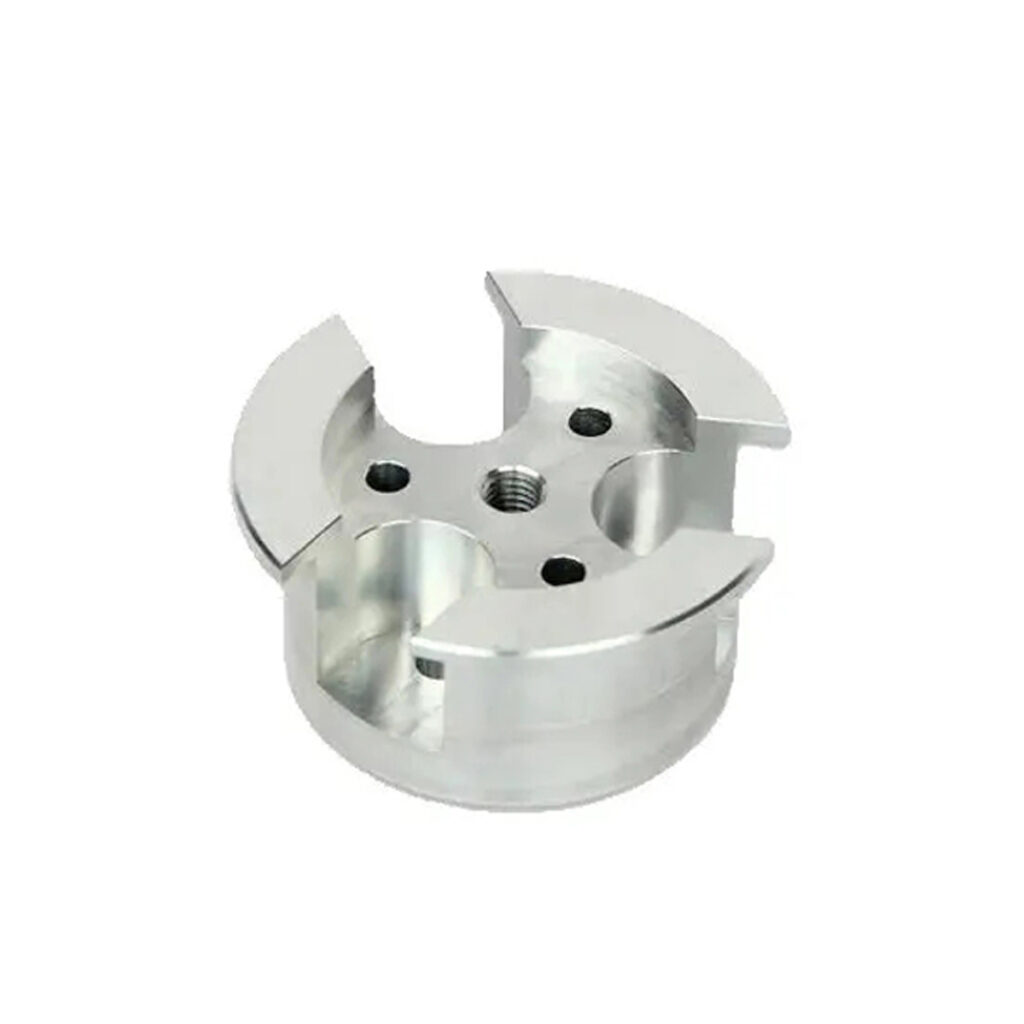In the world of CNC machining, the perfect design is only as good as the material it’s made from. Selecting the right material is a critical decision that impacts not just the functionality and longevity of your part, but also its manufacturability, lead time, and overall cost. With a vast array of metals and plastics available, making the optimal choice can seem daunting.
This guide is designed to demystify the material selection process. We will walk you through the key considerations and provide a detailed comparison of the most common CNC machining materials, empowering you to make an informed decision that balances application, durability, and cost.
The Foundation: Key Factors to Consider Before You Choose
Before diving into specific materials, it’s crucial to define your project’s requirements. Answering these questions will create a framework for your selection.
- Functional Application & Mechanical Stresses:
- What is the primary function of the part?
- Will it bear heavy loads, tension, or compression? (Strength & Toughness)
- Will it be subject to impact or sudden force? (Impact Resistance)
- Will it experience cyclic loading that could cause fatigue? (Fatigue Strength)
- Operating Environment:
- What temperature will the part be exposed to? (Thermal Stability & Melting Point)
- Will it be in contact with moisture, chemicals, or solvents? (Corrosion & Chemical Resistance)
- Is it for an electrical or insulating application? (Electrical Conductivity)
- Dimensional & Physical Requirements:
- Does the part need to be lightweight? (Density & Weight)
- Are there strict dimensional stability requirements under varying temperatures? (Thermal Expansion)
- Does it need to allow light to pass through? (Optical Clarity)
- Manufacturing and Post-Processing:
- How complex is the geometry? Some materials are better for fine details.
- What surface finish is required? (Machinability)
- Will the part need secondary operations like plating, anodizing, or painting? (Post-Processing Compatibility)
- Regulatory and Industry Standards:
- Does the part need to meet specific standards? (e.g., FDA compliance for food contact, USP Class VI for medical devices, RoHS for electronics, or AMS for aerospace).
- Budgetary Constraints:
- What is the cost target? This includes both the raw material cost and the cost to machine it (machinability).
With these factors in mind, let’s explore the most popular families of CNC materials.
Part 1: A Deep Dive into Common CNC Metals
Metals are renowned for their strength, durability, and thermal conductivity. They are the go-to choice for structural components, engine parts, and high-stress applications.
1. Aluminum: The All-Rounder Champion
Aluminum is arguably the most popular CNC machining metal, and for good reason. It offers an excellent balance of properties.
- Key Properties: Lightweight, good strength-to-weight ratio, excellent machinability, naturally corrosion-resistant, good thermal and electrical conductivity.
- Common Alloys:
- 6061: The most widely used general-purpose alloy. Excellent all-around properties, weldable, and responds very well to anodizing. Ideal for automotive parts, aerospace frames, and consumer electronics enclosures.
- 7075: Known for its very high strength, comparable to many steels. Used in high-stress applications like aerospace and competitive sports equipment. It is less corrosion-resistant than 6061 and not as easy to machine.
- Best For: Prototypes, aerospace components, automotive parts, electronic housings, heat sinks, and consumer products.
- Cost: Low to moderate. Its excellent machinability often offsets material cost by reducing machining time.
2. Stainless Steel: The Corrosion-Resistant Workhorse
When strength and exceptional corrosion resistance are required, stainless steel is the answer due to its chromium content.
- Key Properties: High strength, excellent corrosion and heat resistance, durable, and can be hardened.
- Common Alloys:
- 304 (SS304): The most common stainless steel. Offers good corrosion resistance and machinability. Ideal for food processing equipment, kitchen fittings, and chemical containers.
- 316 (SS316): Contains molybdenum for superior corrosion resistance, especially against chlorides and acids. Used in marine environments, medical implants, and pharmaceutical applications.
- 17-4 PH (Precipitation Hardening): Can be heat-treated to achieve very high strength and hardness while maintaining good corrosion resistance. Used for high-stress applications like gears, shafts, and aircraft components.
- Best For: Medical instruments, marine hardware, food and beverage equipment, surgical components, and fasteners.
- Cost: Moderate. Harder to machine than aluminum, leading to higher machining costs and tool wear.
3. Titanium: The High-Performance Specialist
Titanium is the premium choice for the most demanding applications where weight, strength, and biocompatibility are critical.
- Key Properties: The highest strength-to-weight ratio of any metal, excellent corrosion resistance (even better than stainless steel), and fully biocompatible.
- Common Alloys:
- Grade 2 (Commercially Pure): Good ductility and corrosion resistance. Used in chemical processing and medical implants.
- Grade 5 (Ti-6Al-4V): The most common titanium alloy. Offers very high strength and is the workhorse for aerospace, military, and high-performance automotive industries.
- Best For: Aerospace components (airframe structures, engine parts), medical implants (bone screws, joint replacements), and high-performance automotive parts.
- Cost: High. The material is expensive, and it is challenging to machine, requiring specialized tools and techniques, which further increases cost.
Other Notable Metals:
- Brass: Excellent machinability, good electrical conductivity, and aesthetic appeal. Often used for electrical connectors, plumbing fittings, and decorative components.
- Copper: The best electrical and thermal conductor. Used primarily for bus bars, heat exchangers, and electrical components. It is soft and challenging to machine with long, stringy chips.
Part 2: A Deep Dive into Common CNC Plastics
Plastics offer unique advantages like electrical insulation, low weight, inherent corrosion resistance, and often lower cost.
1. ABS: The Prototyping Standard
ABS is a tough, impact-resistant thermoplastic known for its good balance of properties and ease of machining.
- Key Properties: Good impact strength, rigidity, and decent chemical resistance. It can be easily post-processed (sanded, painted, glued).
- Best For: Enclosures, prototypes, consumer products, automotive trim, and LEGO bricks.
- Cost: Low. One of the most cost-effective engineering plastics.
2. Polycarbonate (PC): The Impact Resistor
Polycarbonate is renowned for its incredible impact strength and optical clarity.
- Key Properties: Extremely high impact resistance (virtually unbreakable), good dimensional stability, and transparent.
- Best For: Protective shields, bullet-proof glass applications, lenses, machine guards, and electronic displays.
- Note: It can be susceptible to scratching and may degrade with prolonged UV exposure.
- Cost: Low to moderate.
3. Nylon (PA 6/66): The Wear-Resistant Performer
Nylon is a strong, durable, and versatile plastic with excellent wear and abrasion resistance.
- Key Properties: High mechanical strength, good toughness, low coefficient of friction, and good chemical resistance.
- Best For: Gears, bearings, bushings, pulleys, and other parts requiring high wear resistance.
- Note: Nylon is hygroscopic, meaning it absorbs moisture from the air, which can affect its dimensions and properties.
- Cost: Low to moderate.
4. PEEK: The High-Tech Premium Polymer
PEEK is a high-performance thermoplastic that retains its properties at high temperatures and in harsh environments.
- Key Properties: Excellent mechanical properties that are maintained at high temperatures (up to 250°C / 480°F), inherently flame retardant, highly chemical resistant, and biocompatible.
- Best For: Aerospace components, medical implants (replacing metal), semiconductor manufacturing parts, and oil & gas applications.
- Cost: High. It is an expensive material and can be challenging to machine.
5. Delrin (POM): The Precision Engineer’s Choice
Delrin (Acetal) is known for its high stiffness, low friction, and exceptional dimensional stability.
- Key Properties: High tensile strength, rigidity, excellent creep resistance, and a low coefficient of friction. It machines beautifully to a smooth, glossy finish.
- Best For: Precision gears, insulators, bearings, locks, and mechanical assemblies requiring low friction and high precision.
- Cost: Moderate.
Part 3: The Decision Matrix – Putting It All Together
Let’s apply our framework to some common scenarios to see how the selection process works.
| Application Scenario | Key Requirements | Top Material Contenders | Rationale |
|---|---|---|---|
| Aircraft Bracket | High Strength-to-Weight, Fatigue Resistance | Aluminum 7075, Titanium Grade 5 | Both offer exceptional strength without the weight penalty of steel. Choice depends on the criticality and budget. |
| Medical Implant | Biocompatibility, Strength, Corrosion Resistance | Titanium Grade 5, PEEK, Stainless Steel 316L | All are biocompatible. Titanium offers the best osseointegration, PEEK is radiolucent and lighter, 316L is a cost-effective option. |
| Industrial Gear | Wear Resistance, Low Friction, Strength | Delrin (POM), Nylon, Stainless Steel 17-4 PH | Delrin and Nylon are quiet and have low friction. For high-load or high-temperature environments, 17-4 PH is superior. |
| Electronic Enclosure | Shielding, Heat Dissipation, Light Weight | Aluminum 6061 | Excellent machinability, good EMI shielding, and great thermal dissipation. Easily anodized for color and protection. |
| Chemical Valve | Chemical Resistance, Pressure Rating | Stainless Steel 316, PEEK | 316 offers high strength and good chemical resistance. PEEK is used for the most aggressive chemicals and where metal contamination is a concern. |
| Consumer Product Prototype | Low Cost, Good Aesthetics, Fast Turnaround | ABS, Aluminum 6061 | ABS is cheap and easy to machine/paint. Aluminum provides a more premium feel and is also highly machinable. |
Final Checklist Before You Finalize:
- Have I defined the mechanical and environmental stresses?
- Have I considered the part’s weight and thermal needs?
- Is the material compatible with necessary post-processing?
- Does the material meet industry-specific regulations?
- Does the total cost (material + machining) fit my budget?
Conclusion
Choosing the right material is a strategic decision that bridges your design vision with a functional, reliable, and cost-effective reality. There is rarely a single “perfect” material, but rather an optimal one that best satisfies your most critical requirements.
By systematically evaluating your needs against the properties of these common metals and plastics, you can confidently select a material that will ensure the success of your CNC-machined part. When in doubt, consult with your manufacturing partner early in the design process; their expertise can provide invaluable guidance and help you avoid costly mistakes.


